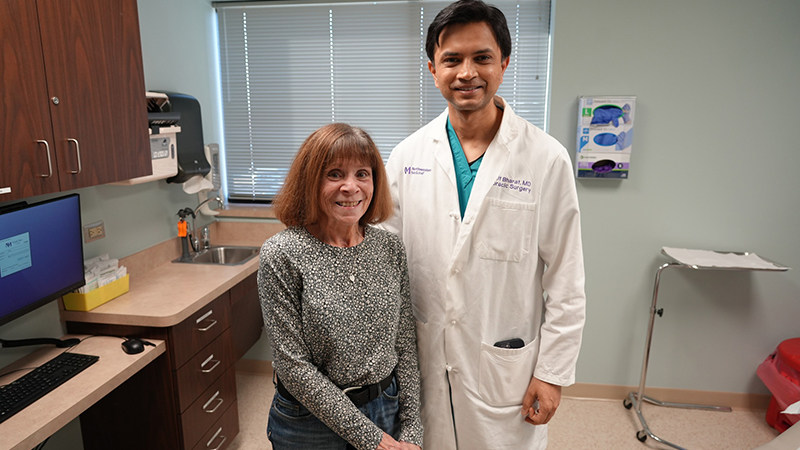How Telehealth Benefits Patients
Published June 2020
Exploring Virtual Visits.
Virtual visits through video chat or telephone can be especially beneficial for patients who prefer to stay home because they are at high risk of severe illness. Just like an in-person visit, during a virtual visit, your physician may be able to make a real-time diagnosis, develop a treatment plan with you, adjust your current treatment plan and prescribe medications.
“COVID-19 has expedited changes in health care that we were headed toward anyway,” says Northwestern Medicine Neurologist Igor J. Koralnik, MD, who has pioneered the use of telehealth in his practice as a global expert in rare autoimmune neurological disorders. “I hope we continue to use these telehealth capabilities to give people access to better care.”
COVID-19 has expedited changes in health care that we were headed toward anyway.— Igor J. Koralnik, MD
Telehealth Advantages
Dr. Koralnik says that telehealth is ideal for patients with recurring appointments to manage a chronic illness who have a treatment plan in place that may just need to be fine-tuned. For example, a telehealth visit may be beneficial for someone with Parkinson’s disease with a treatment plan in place, who has been experiencing problems with their gait recently. Via telehealth, the neurologist can watch the patient walk and conduct other neurological tests, such as watching the patient open and close their fists, to determine how to adjust their medication to improve their motor function.
Telehealth is also ideal for second opinions. “Once diagnostic tests are complete, a patient can send their charts to a leading expert, who can use telehealth to give them a second opinion,” explains Dr. Koralnik.
Finally, telehealth can benefit those who have been diagnosed with a rare disease and may not have access to a local specialist who treats it. As an expert in neurological infectious diseases, Dr. Koralnik sees patients from outside of the Chicagoland area in his practice at Northwestern Medicine via virtual visits. He also teaches his fellows at Northwestern University Feinberg School of Medicine how to care for these patients, who are seeking his advice from all over the world.
“Physicians are learning alongside patients as we continue to move visits online,” says Dr. Koralnik. “However, I believe we have to embrace these changes and incorporate these technological advances into the way we practice medicine.”
How to Have a Virtual Visit
Your living room is now the waiting room. Your telehealth visit will typically be conducted via video on your computer, tablet or smartphone. Your appointment may also be by telephone only.
To prepare for your telehealth visit:
- If you need help setting up the video visit, please view this video.
- Set up in a quiet, private, comfortable and well-lit place. Depending on your appointment, your physician may ask you to stand up and move around.
- For video visits, log on 15 minutes before your appointment to make sure your audio and video are working properly, your software is up-to-date and your internet connection is strong.
- Just like any medical visit, you should:
- Be prepared to discuss your symptoms
- Know your medical history and recent test results
- Have a list of current medications
- Prepare any questions you have for your physician ahead of the visit
- Ask your physician to clarify anything you don’t understand or need repeated
Consult your physician to see if your next visit can be a virtual visit. If you are having a medical emergency, call 911 or go to the closest emergency department. Learn more here.






